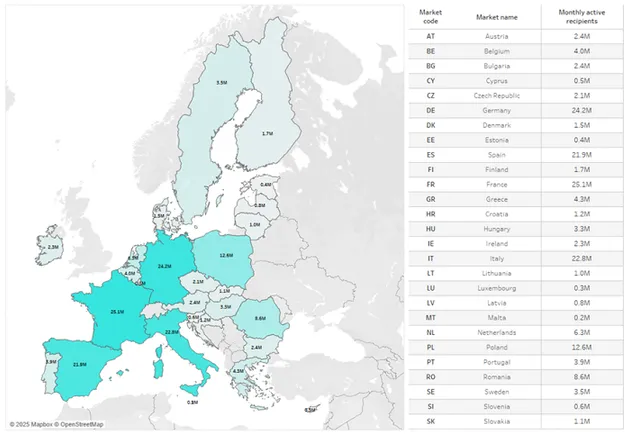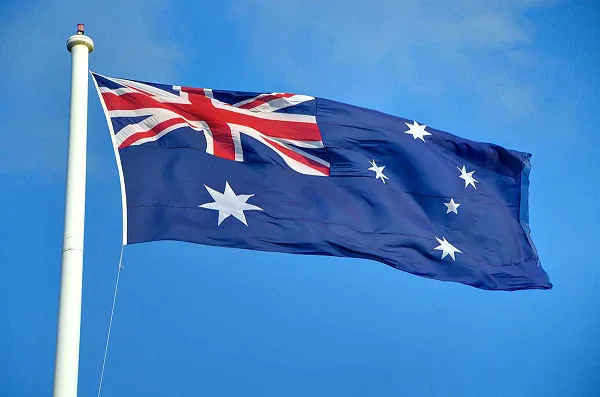Higher Education Marketing Campaigns: Enrollment Marketing Explained
What makes a student choose one university over another? The answer is in the stories we tell and the way we guide them through their decision-making process. For colleges and universities, education marketing campaigns are about connecting with people...

What makes a student choose one university over another?
The answer is in the stories we tell and the way we guide them through their decision-making process.
For colleges and universities, education marketing campaigns are about connecting with people (students and families) who want to feel like they belong.
In this blog, we’ll examine how marketing campaigns for educational institutions shape enrollment and highlight some of the top higher education ads and strategies that have made a significant impact.
Let’s get started.
What’s Inside
Successful Marketing Campaigns for Educational Institutes Worldwide #GoBlue – University of Michigan What Can You Imagine at Purdue? – Purdue University Harvard Commencements – Harvard University Powered by experience: You to the Power of Us – Macquarie University Welcome to Cambridge – Cambridge University What Texas A&M Stands For – Texas A&M University This is MIT – Massachusetts Institute of Technology (MIT) How Education Marketing Campaigns Shape Student Recruitment Key Strategies Behind University and Higher Education Marketing Campaigns FAQ about Higher Education Marketing CampaignsSuccessful Marketing Campaigns for Educational Institutes Worldwide
At its base, an education marketing campaign is a plan to reach prospective students, keep them engaged, and help them picture themselves on campus.
Unlike a generic ad campaign, this type of work speaks to very personal questions:
Can I afford this?
Will I fit in here?
Will this help me achieve my goals?
In that section, we’ll showcase the top marketing campaigns that can answer these questions perfectly.
#GoBlue – University of Michigan What Can You Imagine at Purdue? – Purdue University Harvard Commencements – Harvard University Powered by experience: You to the Power of Us – Macquarie University Welcome to Cambridge – Cambridge University What Texas A&M Stands For – Texas A&M University This is MIT – Massachusetts Institute of Technology (MIT)#GoBlue – University of Michigan
University of Michigan’s #GoBlue is a campaign that goes beyond typical financial aid messaging; it aims to build a broader cultural and community identity.
Actually, #GoBlue started as a rallying cry for athletics but grew into a tag across academics, alumni pride, and student life.
By capitalizing on the existing momentum, the university transformed it into more than just a slogan; it became a digital community space where students, prospects, and even parents could view real stories in real life.

Source: https://www.instagram.com/uofmichigan/
The best part of that campaign? Students, alumni, and fans naturally use #GoBlue when posting on social media channels. That means the campaign benefits from organic, peer-driven storytelling. And yes, that is a far more trusted source than institutional ads.

What Can You Imagine at Purdue? – Purdue University
We all know that building emotional connection is essential in marketing, no matter what the industry is. And Purdue University’s “What Can You Imagine at Purdue” is a great example of it.
The video campaign, with 30 million views on YouTube, tells a story from the viewpoint of a little girl imagining her future education.
As we stated above, it embeds emotional elements: family, dreams, and community. It’s a way to communicate what Purdue stands for, not just what it offers in terms of programs.
At Purdue, we believe the only barriers to what you can achieve should be the limits of your imagination. And we believe that a world-class education should be accessible at every stage of life, helping you take the small steps to pursue your giant leap.
Across Indiana, Purdue Polytechnic High Schools are helping more students prepare for college. On Purdue’s West Lafayette campus, hands-on, experiential learning is empowering more than 50,000 students to discover their passion. And around the world, Purdue Global is meeting the needs of working adults who often have some college credit but no degree.
Wherever, whatever, and however we study, we’re united in the persistent pursuit of the next giant leap.
Harvard Commencements – Harvard University
Harvard’s Commencement ceremonies are not framed as university ad campaigns; however, they function as some of the most effective ongoing marketing content the university produces.
As you already know, every year, millions see Harvard University highlights with these ceremonies, from keynote speeches to iconic processions, at no paid media cost.
With the presence of well-known figures, like Sacha Baron Cohen, Mark Zuckerberg, Oprah, and more, this kind of earned media exposure is something brands would spend heavily to replicate.
And speeches often go viral via social media shares since they mix wisdom, humor, and inspiration.
For prospective students (and parents & alumni), watching a Harvard Commencement becomes aspirational. And all of these make these unique ceremonies a great example of a marketing campaign for educational institutes.
Powered by experience: You to the Power of Us – Macquarie University
Speaking of building emotional connection with the prospective students, here is Macquarie University’s campaign, which is viewed by millions of students just on YouTube.
The campaign emphasizes the idea that each student brings unique strengths, ideas, and passions while showcasing real-world research, industry collaboration, and how academic work at Macquarie solves real issues.
And yes, a great number of students and their families care about employability in today’s world, and this campaign directly addresses those concerns.
When you’re powered by our collective, you multiply your potential to go beyond the classroom theory and on to achieve truly remarkable things. That’s why we’ve knocked down the walls between academia and industry to give you inbuilt internships and courses co-created by industry professionals, all so you can receive the perfect blend of academic and real-world experience you need to get ahead.
What’s more, the education marketing campaign is multi-channel: videos, outdoor/digital/out-of-home media, cinema, and social media content.
Welcome to Cambridge – Cambridge University
Giving prospective students a sense of campus life is another great way to promote an educational institution.
Even though it may not have the same visibility as some global campaigns, “Welcome to Cambridge” has many of the ingredients to function well as a model of education marketing.
The campaign video features content that appears less polished. However, being more “real” helps to build trust. Cambridge has an advantage in terms of history and academic depth, which increases credibility.
That’s why the video has been seen more than 16 million times on YouTube.
What Texas A&M Stands For – Texas A&M University
Let us repeat: Building emotional resonance works great in education marketing campaigns. And the “What Texas A&M Stands For” ad supports that truth.
With the video campaign, Texas A&M University showcases faculty, students, athletes, and campus visuals, and gives a human face to the values.
What does Texas A&M University stand for? We stand for excellence, respect, and loyalty. We stand for leadership, integrity and selfless service. We stand as the 12th Man. We always stand ready. We stand up for others. We stand ready to serve. At Texas A&M, we stand for something bigger than ourselves, and we stand strong together.
According to the Texas A&M Marketing and Communications 2024 Impact Report, “What Texas A&M Stands For” became the most-watched higher-ed video on YouTube in 2024 for Texas A&M. In 4 months: 54 million TV views and 20+ million YouTube views.
This is MIT – Massachusetts Institute of Technology (MIT)
As you already know, higher-ed advertising is about showcasing how the university leads in research, drives innovation, and contributes to national defense, technology, and economic leadership.
The 2025-dated MIT video covers all of these.
The Massachusetts Institute of Technology is an independent, coeducational, privately endowed university in Cambridge, Massachusetts. Our mission is to advance knowledge; to educate students in science, engineering, and technology; and to tackle the most pressing problems facing the world today. We are a community of hands-on problem-solvers in love with fundamental science and eager to make the world a better place.
It’s possible to say that the messaging balanced pride with urgency. MIT showcases itself as essential to the education, future prosperity, and security of the United States.
Since it was released amid debates over federal funding, tax changes, and university research policy, its audience included policymakers and the general public, in addition to prospective students.
How Education Marketing Campaigns Shape Student Recruitment
No need to say: Global education services are experiencing rapid expansion, projected to grow from $4.6 trillion in 2023 to nearly $6 trillion by 2028, driven by demand for higher-ed and digital learning options.
In this case, marketing campaigns are a main driver of student recruitment strategies.
What’s more?
According to the e-Expectations research series, 77% of students say that a school’s website plays a decisive role in the first step, while over 60% rely on email and social media updates during their research process. This means that consistent, multi-channel campaigns do more than build brand awareness.

Source: https://www.ruffalonl.com/papers-research-higher-education-fundraising/e-expectations/
Similar to that data, the survey reports that 93% of respondents visit institutions’ websites to make enrollment decisions. However, only 13% of respondents found these websites useful.
These sources & data show us that prospective students are no longer satisfied with glossy brochures alone. They (and their parents) expect data on program outcomes, financial aid, authentic experiences, and employment opportunities.
For institutions, these expectations translate into a dual strategy: campaigns must highlight both the academic strengths and the personal value of the student journey.
And education marketing (especially university ads) is also becoming personalized. With the help of CRM tools, AI-powered apps, and AI-driven analytics, universities can segment audiences by interests, demographics, and engagement behavior. This, of course, helps marketers to make their messages resonate with prospective students at every stage of the recruitment funnel.
By creating content aligned with student expectations and using digital platforms & AI tools or agents effectively, higher-ed institutions can boost enrollment rates.
Key Strategies Behind University and Higher Education Marketing Campaigns
Before exploring the key strategies behind higher-ed marketing campaigns, let’s take a look at what a typical campaign includes:
Paid ads on Google, Instagram, or TikTok that meet students where they spend time, Personalized emails (AI-powered today) Campus stories told by current students through videos, blogs & testimonials, Virtual tours and live chats that give a real taste of life on campus, Gentle reminders about deadlines and scholarships so no one slips through the cracks.These are typical; below, you will find advanced suggestions for successful education advertising campaigns:
#1 Building AI-Ready Content Ecosystems
As prospective students turn to AI-powered search tools, content must be structured for machine readability.
Universities should prioritize knowledge-rich, semantically tagged content that AI systems can easily retrieve and summarize.

As we highlighted in prior research, AI agents thrive on structured, contextual data, making this step critical for higher education marketing teams.
#2 Developing & Deploying Personalized AI Advisors
The next generation of higher education marketing will involve agentic AI advisors that act as intelligent assistants. They guide students through application steps, offer personalized recommendations, and even simulate academic or career pathways.
For universities, AI agents offer prospective students access to a digital advisor that feels more like a dedicated admissions counselor than a search tool.
#3 Making Appointments Effortless
One overlooked friction point in student recruitment is scheduling campus tours or counselor appointments.
A simple search bar feature that enables students to ask, “Book a tour for next Friday” or “Schedule a call with admissions” creates a seamless experience.

This reduces administrative burden while allowing students to take the next step toward enrollment.
#4 Taking Advantage of Local SEO to Capture Regional Interest
While global reach matters, higher education marketing also benefits from focusing locally.
Optimizing for local SEO ensures universities appear prominently when students (or their parents) search queries such as “best engineering university near me” or “top MBA programs in London.”
This means maintaining accurate Google Business profiles, optimizing content for location-based queries, and encouraging student reviews that reinforce credibility.
#5 Sharing Authentic Community Stories
This is a straightforward yet crucial approach.
Numbers and rankings alone do not inspire prospective students. Storytelling does.
Sharing community-driven narratives like student success stories, alumni achievements, and faculty contributions humanizes the institution.
The best part? When these stories are integrated into digital campaigns, AI systems and LLMs have more content to provide prospective students with relatable touchpoints.

Source: https://www.sfu.ca/
Community stories also work well in multimodal formats: short-form TikTok videos, interactive web features, or podcasts featuring student voices.
FAQ about Higher Education Marketing Campaigns
What are the best education marketing campaigns launched by universities?
As we mentioned above, the best education marketing campaigns combine identity, aspiration, and authenticity. Michigan’s #GoBlue builds community pride, Purdue’s What Can You Imagine? inspires ambition, and Harvard’s Commencements highlight milestone achievements. Campaigns like Macquarie’s Powered by Experience, Cambridge’s Welcome to Cambridge, Texas A&M’s What We Stand For, and MIT’s This is MIT each showcase unique strengths while reinforcing values and reputation.
How can a marketing campaign for educational institutes attract more students?
To attract more students, campaigns should be:
Showcasing student voices, alumni outcomes, and real experiences. Using AI-driven insights to deliver tailored content (program recommendations or location-specific ads.) Providing engagement across TikTok, Instagram, YouTube, and search platforms. As noted in recent reports, short-form video is particularly effective for prospective students. Highlighting employability, research impact, or unique academic experiences.What makes an education marketing campaign successful in higher education?
Narratives that go beyond brochures and show the real experiences. Evidence-based outcomes like employment rates, partnerships, or research contributions. AI and automation-powered tools for campaign reporting, student engagement, and conversion. Campaigns that create belonging (via ambassador programs or interactive events).Why do universities invest in education marketing campaigns for student recruitment?
Students and their parents now want clear details on outcomes, financial aid, real experiences, and career paths. This pushes universities to show both their academic strengths and the personal value of studying there. With tools like CRM systems and AI-driven apps, schools can tailor messages to different interests and backgrounds, making outreach feel more relevant. When campaigns reflect these expectations, they connect more deeply and help drive stronger enrollment.

 Konoly
Konoly 







![The Usability Testing Playbook [Expert Tips & Sample Questions]](https://www.hubspot.com/hubfs/usability-testing-1-20250305-3357250.webp)



![The Top Search Engines Other Than Google [+ Some You Might Not Expect]](https://www.hubspot.com/hubfs/other%20search%20engines%20header%20image%20.jpg)



















